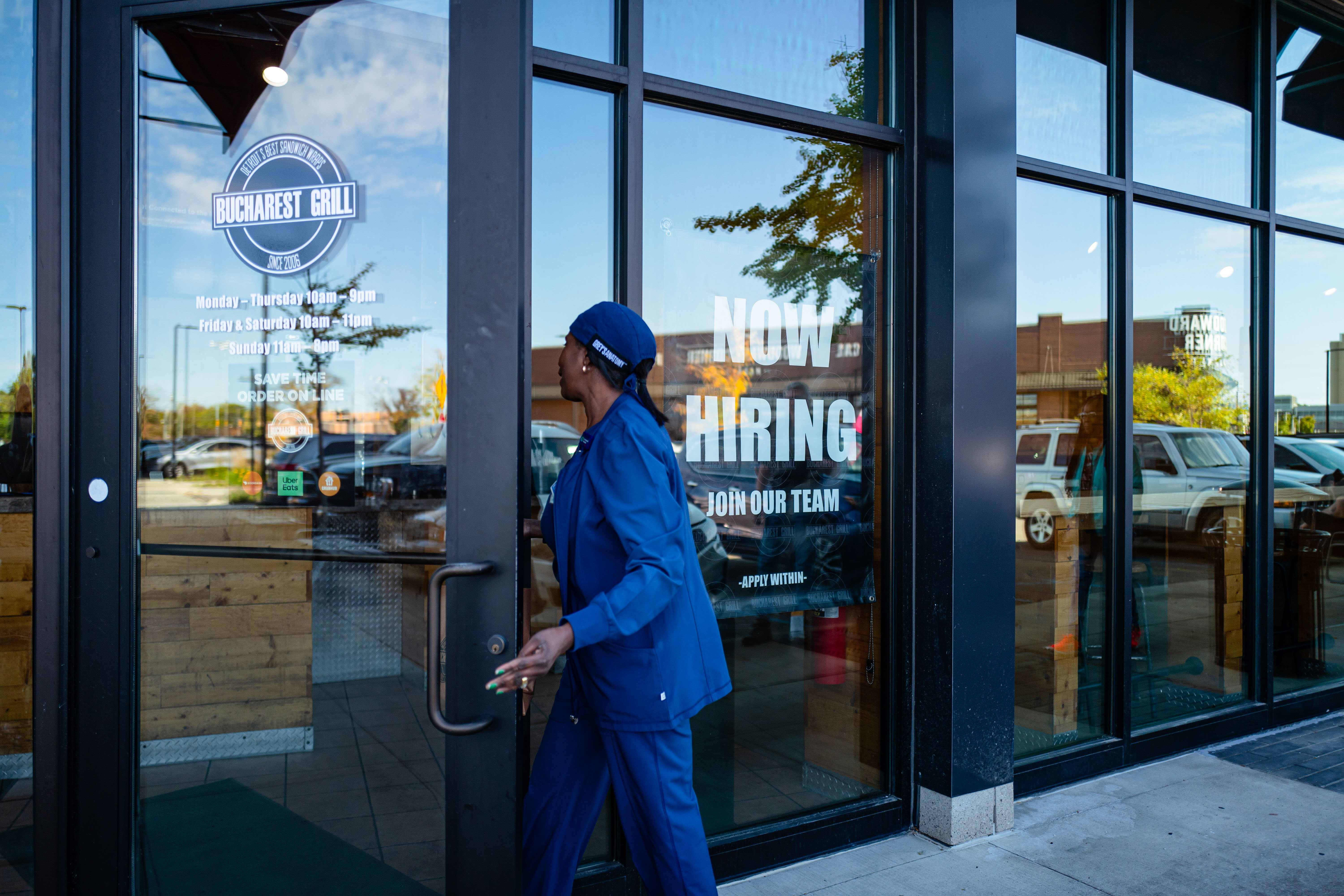In the final comprehensive snapshot of the national labor market heading into next week’s presidential election, the economy added a much smaller-than-expected number of jobs in October.
Last month, there were just 12,000 new jobs, below the consensus estimate of 113,000. This represented the smallest monthly employment gain since December 2020.
According to the Bureau of Labor Statistics (BLS), the unemployment rate was unchanged at 4.1 percent.
The White House noted this week that the October jobs report would be affected by devastating hurricanes Helene and Milton and labor action.
BLS officials say that the household survey, which removes duplication, was conducted according to standard procedures and that response rates were normal. Completing the establishment survey, which gathers employment, hours, and earnings data from companies and governments, was the challenge.
“The initial establishment survey collection rate for October was well below average,” the BLS said in a statement. “However, collection rates were similar in storm-affected areas and unaffected areas. A larger influence on the October collection rate for establishment data was the timing and length of the collection period.”
The period lasted just 10 days last month and was finished several days before the month’s end.
The household survey showed 368,000 lost jobs.
Most of last month’s employment gains were centered in health care (52,000) and government (40,000). The construction sector also added 8,000 new positions.
Manufacturing payrolls fell by 46,000, “reflecting a decline of 44,000 in transportation equipment manufacturing that was largely due to strike activity,” the BLS noted. Professional and business services employment also declined by 49,000.
Employment levels for various industries, such as retail, leisure and hospitality, and financial activities, were little changed.
Average hourly earnings rose by 0.4 percent from a downwardly adjusted 0.3 percent in September.
The labor force participation rate edged down to 62.6 percent from 62.7 percent. Average weekly hours were unchanged at 34.3.
The trend of frequent and sizable revisions to previous employment data persisted in October. The August jobs report was adjusted down by 81,000, from 159,000 to 78,000, and September payrolls were adjusted lower by 31,000, from 254,000 to 223,000.
Full-time employment declined by 164,000, while part-time jobs fell by 227,000.
The number of people working two or more jobs declined from its record high of 8.659 million in September to 8.305 million.
The gap between U.S.- and foreign-born employment levels widened in October. Employed U.S. workers tumbled by 773,000 from October 2023, and employed foreign-born workers increased by more than 1 million.
Market Reaction
“As we thought, this jobs report was going to have a lot of noise around any signal,” Bryon Anderson, head of fixed income at Laffer Tengler Investments, said in a note. “With two hurricanes and a Boeing strike, the likelihood of this report being clean was going to be hard.”Thousands of Boeing workers have been on strike since Sept. 14, and union members recently rejected the company’s latest contract offer over a dispute surrounding pensions.
However, even when taking into account the hurricane effects, “poor jobs and downward revision are even worse than the hurricane adjusted estimates,” Bryce Doty, senior vice president at Sit Investment Advisors, said in a note.
“This report dampens the enthusiasm from last month’s report. However, we are still expecting only a 25 bps cut by the Fed next week as the economy is still unlikely to go into a recession. The yield curve should steepen on this news let by shorter maturity treasury yields coming back down.”
The financial markets largely shrugged off the disappointing jobs report as the leading benchmark indexes were up by as much as 0.5 percent.
U.S. Treasury yields tanked following the data, with the benchmark 10-year yield falling below 4.23 percent.
The U.S. dollar index, a gauge of the greenback against a basket of currencies, also plummeted below the 104.00 threshold.
Market analysts say the October jobs data cemented a 25-basis-point interest rate cut at next week’s Federal Reserve policy meeting.
“Our base case is for 25 bps cuts in both November and December,” Charlie Ashley, portfolio manager at Catalyst Funds, said in a note. “We are confident that we will get a 25 bps cut in November given that recent readings on inflation, employment, and GDP have not been significantly outside of expectations.”
According to the CME FedWatch Tool, the futures market is overwhelmingly expecting a quarter-point reduction to the federal funds rate.
A Resilient Labor Market
Headline employment data suggest the U.S. labor market remains resilient, having withstood a plethora of headwinds. Though there are signs that it is cooling down after a post-pandemic overheating, the jobs situation continues to hold steady.Before the October jobs report, a flurry of employment numbers offered a snapshot of the labor market heading into the Nov. 5 presidential election.
With the presidential election just days away, the October jobs report was closely watched. The current administration often touted the labor market’s strength to voters, citing 16 million new jobs. The economy continues to be a top issue for voters heading to the ballot box, and the latest employment data could add to growing discontentment about current economic conditions
The week started with the September Job Openings and Labor Turnover Survey report.
According to the BLS, the number of job vacancies maintained its downward trend, with openings falling to 7.443 million, the lowest since January 2021. Fewer workers resigned from their positions, too, as job quits declined to 3.071 million, the lowest since August 2020.
At the same time, companies are taking on fewer workers, as hiring levels were little changed in September.
The private sector added a higher-than-expected 233,000 new jobs in October, according to the ADP National Employment Report. The September reading was also adjusted higher to 159,000 from 143,000.
“Even amid hurricane recovery, job growth was strong in October. As we round out the year, hiring in the U.S. is proving to be robust and broadly resilient,” said Nela Richardson, ADP chief economist.
The payroll processor noted that wage growth continued the two-year slowdown as annual pay gains for job-stayers and job-changers slowed to 4.6 percent and 6.2 percent, respectively.
Data regarding U.S. companies intending to terminate workers were mixed. Global recruitment firm Challenger, Gray, and Christmas reported that businesses announced 55,597 job cuts last month. This is up by 51 percent from October 2023 but down by 24 percent from the previous month.
Andrew Challenger, senior vice president at Challenger, Gray, and Christmas, says businesses are “in a holding pattern” as they take a wait-and-see approach amid the 2024 election.
“Job openings have fallen and hiring is pretty flat at the moment,” he said. “Companies appear to be in a holding pattern as we await election results and the potential regulatory and market environment that follows.”
Employee compensation costs are easing. The BLS reported that the employment cost index rose by 0.8 percent in the third quarter, down by 1 percent from the second quarter.
In the aftermath of hurricanes Helene and Milton, economists were concerned that the natural disasters impacting the Southeast would distort economic data. However, based on the federal government’s timely week-to-week initial jobless claims statistics, the labor market has remained intact.
For the week ending Oct. 26, the number of individuals filing for first-time unemployment benefits decreased by 12,000 to 216,000, the lowest level since May, according to the Department of Labor. This was the third consecutive week of falling claims after an initial elevation in early October.














